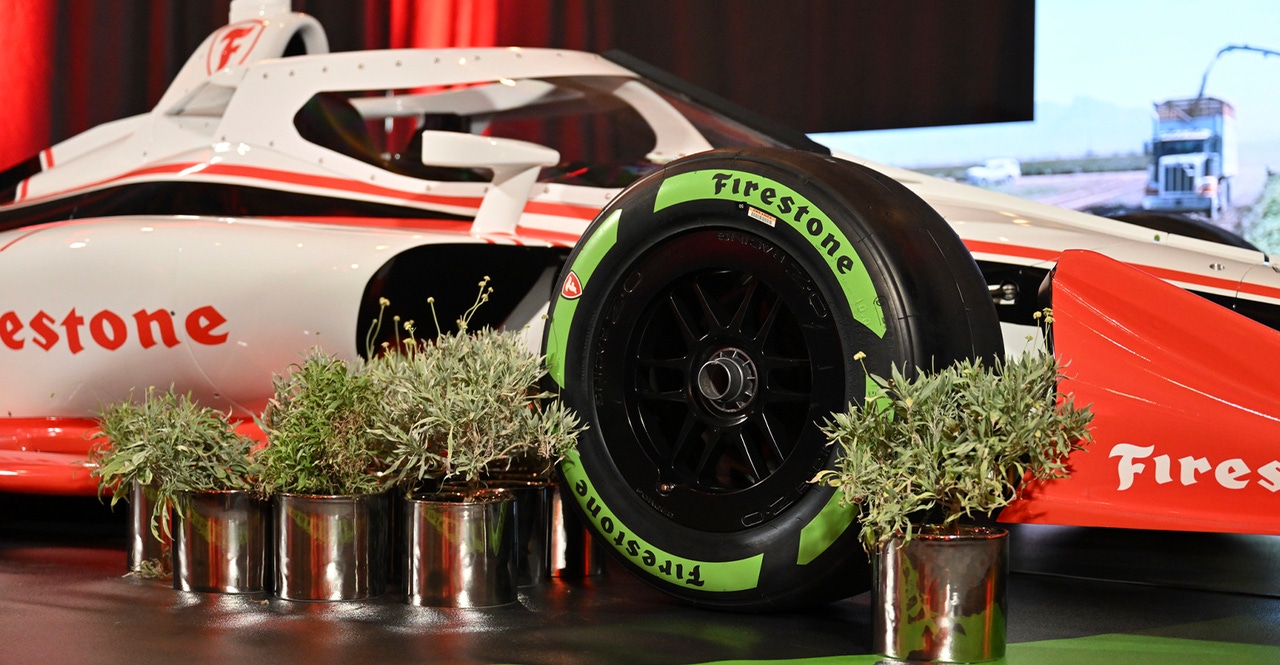Bridgestone Carves New Pathways to Help Green Tire Industry
Bridgestone and a few of its competitors are now leveraging pyrolysis to make recovered carbon black to go back into new tires, avoiding sourcing additional petroleum from virgin carbon black.

Bridgestone is aiming to achieve carbon neutrality and make tires from 100% renewable materials by 2050 and is exploring multiple pathways to get there working with partners like biotech company LanzaTech and even leading competitor Michelin. Some technologies are already commercialized; others are nearing industrial scale; while some are further down the pipeline.
Bridgestone’s retread work through its subsidiary Bandag, has so far diverted about 300M tires and saved four billion gallons of oil. Retreaded tires use one-third of the raw materials as new products, and a premium tire/retread combination provides 500% longer wear than ultra low-cost new tires, says Erik Seidel, vice president of Sustainable Solutions, Bridgestone Americas.
Once they can no longer be retreaded, they go on for recycling, a more cumbersome and difficult task.
“Tires have a lot of stringent performance and safety thresholds and are made from complex polymers that integrate multiple materials.
They can’t simply be pulled apart and returned to their elementary components to make an equally high-performing tire,” Seidel says.
What limited options exist are energy intensive and involve multiple steps.
And so, the technology for closed loop recycling – making new tires from old ones—is still emerging, while for now most end-of-life tires go into other products like flooring, mulch, and field turf.
Bridgestone and a few of its competitors are now leveraging pyrolysis to make recovered carbon black to go back into new tires, avoiding sourcing additional petroleum from virgin carbon black. But the technology has limited capacity to produce a quality product, as the recovered material has some degradation.
Bridgestone and Michelin are working together to define standard industry criteria for recovered carbon black, seeing its potential to someday help facilitate a viable closed-loop recycling option.
“Our partnership with Michelin is critical as no one company will be able to deliver the supply chain advancements necessary to achieve our shared aim of a more sustainable and circular tire economy,” Seidel says.
Michelin echoed in a statement: “The conversion of end-of-life tires into cutting-edge materials that can be reused marks a significant initial stride towards achieving our goal of 40% recycled and renewable sustainable materials by 2030,” said Fabien Gaboriaud, senior vice president of Sustainable Materials & Circularity, Michelin.
Bridgestone’s Turanza EV, which incorporates recycled and renewable content, has been on the road for a while. The mega tire manufacturer has launched a Turanza EV tire made of 50% recycled content, focusing on electric trucks because they go through tires roughly 30 to 40% quicker than comparable internal combustion engine vehicles due to that they continuously generate high torque.
The Bridgestone Turanza EV features a next-generation polymer technology that enhances tread resistance to wear and delivers lower levels of rolling resistance to help increase battery efficiency.
Outside of the recycling space, industry leaders are looking at alternative materials to make new tires. Bridgestone is focusing on guayule, a natural rubber from a shrub grown in the southwestern United States and Mexico. It’s proven to perform as well as rubber sourced from Hevea trees, which are native to South America’s Amazon region.
Seidel sees a shift to guayule as an opportunity to de-risk the supply chain while cutting CO2 emissions by sourcing feedstock closer to Bridgestone’s Arizona manufacturing plant.
Its work to advance guayule, which earned the corporation a United States Department of Agriculture Climate-Smart grant, has been vetted in multiple INDYCAR races, proving to stand up to this sanctioning body’s arduous performance demands.
Guayule uses a third of the water of traditional crops in Arizona, where farmers are struggling to make a living growing cotton and alfalfa, as water scarcity is a problem, notes Seidel.
“We are helping these farmers transition to grow guayule so they can sustain their livelihood while we get feedstock,” he says.
To date, Bridgestone has invested over $100M to commercialize guayule, and most recently committed funds to plant and harvest it at scale.
Though guayule is not quite ready for prime time.
“We’ve been at it for years, and we know it’s safe and durable. But we are creating a new industry and ecosystem of growers and production facilities, so advancing guayule is a long-term commitment,” Seidel says.
The company’s goal is to commercialize the use of guayule rubber in tires by 2030.
Further down the pipeline are more exploratory innovations, including work with LanzaTech to leverage gasification and fermentation to make butadiene to go into tires. The hopeful goal is to create a higher quality product than is currently achievable with recovered carbon black, while delivering environmental benefits.
“We are exploring pathways to make butadiene because it can be used to make synthetic rubber. Today most butadiene is made from virgin fossil inputs, so it is valuable to look at new non-petroleum-based ways to make it to help reduce the carbon footprint of tire production,” says Freya Burton, chief Sustainability officer, LanzaTech.
“By creating new tires from those that have reached the end of their useful lives, we are working to remove virgin fossil carbon from the supply chain in favor of a closed loop system powered by biorecycling,” she says.
Meeting corporate and industry goals will require exploring multiple pathways. And collaboration will be a big piece of the picture, Seidel says.
“You need partners at every step of the value chain to achieve true circularity.”
About the Author
You May Also Like




.png?width=300&auto=webp&quality=80&disable=upscale)